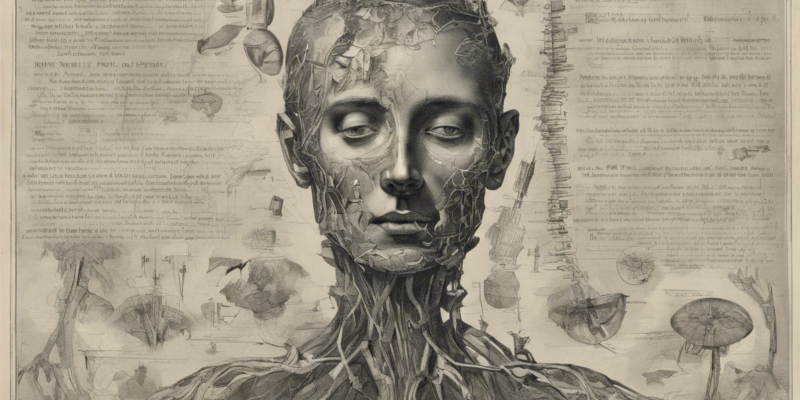Analyzing the Poem “A Work of Artifice”
“A Work of Artifice” is a poignant and thought-provoking poem written by Marge Piercy that delves into the themes of nature, captivity, and freedom. The poem uses a bonsai tree as a metaphor to convey deeper messages about human intervention in the natural world, the impact of confinement on living beings, and the yearning for autonomy and independence.
Overview
The poem begins by portraying a bonsai tree, a traditional Japanese art form where trees are carefully cultivated in containers to maintain their small size. The symbiotic relationship between the tree and its caretaker is explored, drawing parallels between the artificial constraints imposed on the tree and the limitations imposed by society on individuals.
Themes
-
Nature vs. Nurture: The poem raises questions about the authenticity of the bonsai tree’s existence, highlighting the clash between its inherent natural tendencies and the human-imposed cultivation.
-
Imprisonment and Freedom: The bonsai tree is a metaphor for individuals constrained by societal norms and expectations, yearning for liberation from external constraints.
-
Power Dynamics: The relationship between the gardener and the bonsai tree reflects broader themes of dominance and submission, showcasing the impact of control on living entities.
Analysis
Piercy’s use of vivid imagery and metaphorical language paints a vivid picture of the bonsai tree’s life. The poet personifies the tree, attributing human-like qualities to it, such as “supple and proud,” to evoke empathy and understanding from the reader.
The juxtaposition of the tree’s apparent fragility with its inner strength serves as a metaphor for resilience and adaptability in the face of adversity. The poet challenges the reader to reflect on the complexity of human relationships with the natural world and the ethical implications of manipulating living beings for aesthetic purposes.
Poetic Devices
-
Symbolism: The bonsai tree symbolizes not only the beauty of human ingenuity but also the sacrifices made in the name of art and tradition.
-
Alliteration: The poet employs alliteration in phrases like “cramped companion” to create a musical flow and emphasize key ideas.
-
Enjambment: The use of enjambment in the poem conveys a sense of continuity and fluidity, mirroring the tree’s growth despite limitations.
Conclusion
“A Work of Artifice” by Marge Piercy is a compelling exploration of the interplay between captivity and freedom, control and autonomy, in the context of human relationships with the natural world. Through the lens of a bonsai tree, the poet invites readers to reflect on ethical dilemmas surrounding our treatment of living beings and the quest for individual agency in a world marked by constraints.
Frequently Asked Questions (FAQs)
1. What is the central theme of “A Work of Artifice”?
The central theme of the poem is the tension between human intervention and the innate desires of living beings for freedom and authenticity.
2. How does the poet use the bonsai tree as a metaphor?
The bonsai tree symbolizes confinement, resilience, and the struggle for autonomy in the face of external control.
3. What message does Piercy convey about human relationships with nature?
Piercy highlights the ethical dilemmas of manipulating nature for aesthetic purposes and the consequences of imposing artificial constraints on living beings.
4. Why is the title “A Work of Artifice” significant?
The title underscores the artificiality imposed on the bonsai tree and the broader implications for human interactions with the natural world.
5. How does the poet challenge conventional notions of beauty in the poem?
Piercy challenges readers to reconsider beauty in its natural form and question the ethics of altering living beings for human pleasure.
6. What emotions does the poem evoke in the reader?
The poem evokes a range of emotions, including empathy, contemplation, and introspection about the complexities of human-nature relationships.
7. Why is the bonsai tree described as “supple and proud”?
The description highlights the resilience and dignity of the tree despite its constrained existence, emphasizing its inner strength.
8. What is the significance of the bonsai tree being “weak as a kitten”?
The juxtaposition between weakness and strength underscores the tree’s vulnerability and determination to thrive despite adversity.
9. How does the poem resonate with contemporary environmental concerns?
The poem prompts reflection on sustainability, conservation, and ethical stewardship of the natural world in the face of human interventions.
10. What lessons can be drawn from “A Work of Artifice” for human interactions with the environment?
The poem encourages reverence, humility, and respect for the inherent beauty and autonomy of nature, urging a more harmonious coexistence with the natural world.


Comments